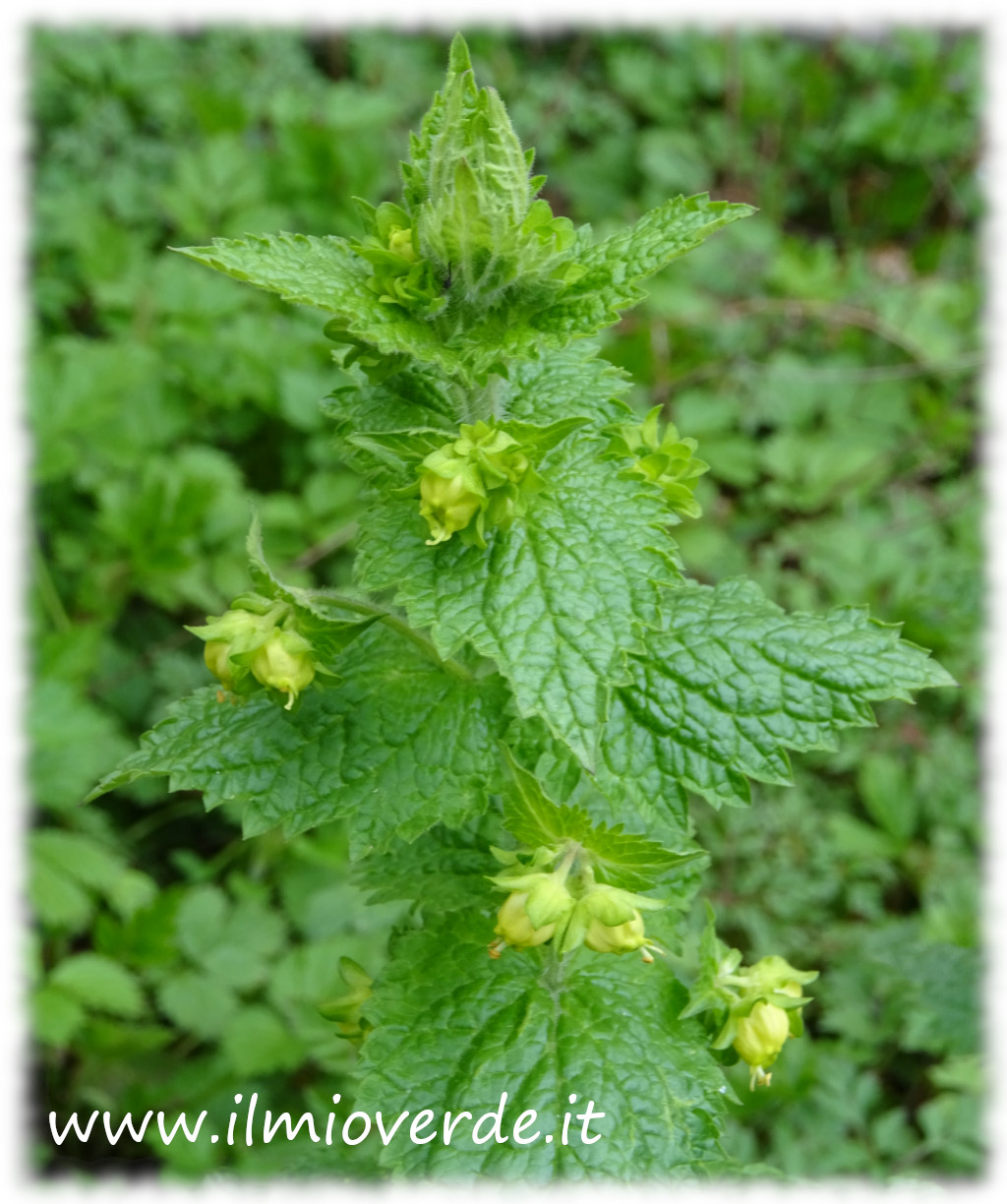Scrophularia vernalis
The genus name Scrophularia is derived from the Latin scrofulae, a term referring to ancient lymphatic diseases (scrofula), for which it was believed that some plants of this genus had curative properties.
The specific epithet vernalis refers to the spring flowering. The species was first described by Linnaeus.
Scientific classification
- Kingdom: Plantae
- Division: Tracheophyta
- Class: Magnoliopsida
- Order: Lamiales
- Family: Scrophulariaceae
- Genus: Scrophularia
- Species: Scrophularia vernalis
Description
Scrophularia vernalis is a perennial herbaceous plant, with an erect, angular, and branched stem, reaching heights of 30 to 80 cm. The leaves are opposite, ovate-lanceolate, with a toothed margin and a glabrous or slightly pubescent surface.
The flowers, arranged in loose terminal inflorescences, are small, yellow-green, with a tubular, slightly bilabiate corolla. The calyx is made up of five oval sepals. The flowering is inconspicuous but characteristic of the genus.
Flowering
Flowering occurs in spring, typically from April to June, with variations depending on altitude and local climatic conditions.
Habitat and Distribution
This species is typical of the European Mediterranean area and is found in various regions of Italy, particularly in hilly and submontane environments. It grows spontaneously in grassy places, forest edges, slopes, hedgerows, rural roads, and ruderal areas.
It prefers sunny or semi-shaded exposures, often in disturbed or ecologically evolving contexts.
Environmental Requirements
- Climate: Temperate, preferring mild environments but with good resistance to cold.
- Exposure: Sunny or partially shaded.
- Soil: Well-drained, from neutral to calcareous, with a moderate presence of organic matter. Tolerant to different substrate types.
Reproduction of Scrophularia vernalis
Reproduction occurs by seed, with spontaneous spread through the production of capsules containing numerous small seeds. No vegetative propagation methods are commonly used in regular cultivation.
Uses and interest
It is not commonly cultivated for ornamental or medicinal purposes. Its interest is primarily botanical and floristic, useful for local floristic studies, biodiversity cataloging, and as an ecological indicator in semi-natural environments.
In the past, some species of the genus were used in folk medicine, but there are no recent documented uses for S. vernalis.
Diseases and adversities
A hardy and resistant species. In its natural habitat, it does not show particular sensitivity to pests or diseases.
The plant is easily confused with other species of the genus, particularly Scrophularia nodosa, from which it differs in flowering time and some minor morphological characteristics (leaf size and shape, corolla color).
Immagine di Davide Giuseppe Zannini
